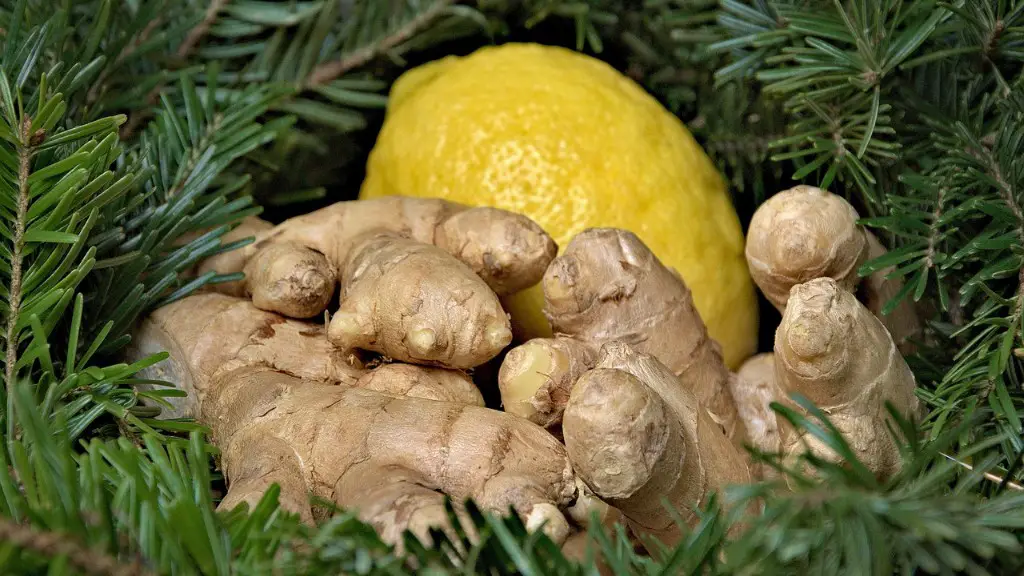One of the most common causes of yellow spots appearing on a lemon tree is iron chlorosis, an iron deficiency in the soil or the tree’s root system. Iron chlorosis is caused by a lack of iron in the soil or a low pH that reduces the absorption of iron by the roots. It affects the ability of the tree to photosynthesize and produces discoloration in the leaves and yellow spots. Symptoms of iron chlorosis include pale yellow leaves with yellow veins, yellow spots on the leaves, leaf drop and overall decline in growth.
Compacted roots can also lead to yellow spots appearing on a lemon tree. Compacted soils can prevent oxygen and nutrients from reaching the tree roots and hinder proper drainage of water. Compacted soils can be caused by poor soil condition, poor drainage, inadequate amounts of mulch or excessive tree growth. The symptoms of compacted soils include yellow spots on the leaves, slow growth, reduced fruiting, and leaf drop.
Uneven watering can also cause yellow spots on a lemon tree. While lemon trees enjoy regular watering, too much water can cause yellow spots on the leaves and decrease the ability of the tree to photosynthesize. Symptoms of over-watering include yellow spots, blistered or wilted leaves, yellowing of the margins, leaf drop and slow growth.
Fungal infection can also cause yellow spots on a lemon tree. Common fungal pathogens that can infect lemon trees include verticillium wilt and garlic, and rust. Symptoms of fungal infections include yellow spots, wilted leaves, stunted growth, and dieback.
Temperature and light can also cause yellow spots on a lemon tree. Lemon trees should be grown in bright, indirect light and in temperatures of 18-21 °C. If the temperature drops below this, it can cause yellow spots to appear on the leaves.
Finally, pests and diseases can cause yellow spots to appear on a lemon tree. Common pests and diseases include mites, scale insects, thrips, and fungal infection. Symptoms vary depending on the type of pest or disease, but yellow spots on the leaves, wilted leaves, and stunted growth are common signs of infestation.
Fungal Infection
Fungal infection is a common cause of yellow spots on a lemon tree. Pathogens such as verticillium wilt, garlic rust and other fungal diseases can cause yellow spots to appear on a lemon tree’s leaves. Symptoms of these pathogens include yellow spots, wilted leaves, stunted growth and dieback. To prevent fungal diseases, lemon trees should be kept in areas where air circulates freely, so fungal spores are not trapped in the leaves. Certain fungicides may be used to control infection, however, cultural practices such as removing infected leaves and avoiding overhead watering are less damaging and more effective in controlling the spread of infection.
Temperature and Light
Temperature and light are important factors in the health of a lemon tree. Lemon trees should be grown in bright, indirect light and in temperatures between 18-21°C. If temperatures drop below 18°C, yellow spots may appear on the leaves. In this case, the tree should be moved to a warmer, sunnier location to prevent further yellowing of the leaves.
Compacted Soils
Compacted soils can prevent oxygen and nutrients from reaching the roots of a lemon tree, leading to yellow spots. Compacted soils can be caused by poor soil condition, inadequate amounts of mulch or excessive tree growth. Symptoms of compacted soils include yellow spots on the leaves, slow growth, reduced fruiting and leaf drop. To prevent compaction, adequate amounts of mulch should be applied and regular soil cultivation should be carried out to loosen the soil and improve drainage.
Uneven Watering
Uneven watering can also cause yellow spots on a lemon tree. Although the tree needs regular watering, over-watering can lead to the yellowing of the leaves and decrease its ability to photosynthesize. Symptoms of over-watering include yellow spots, blistered or wilted leaves, yellowing of the margins and leaf drop. To avoid this, water the tree at regular intervals and avoid excessive or prolonged watering periods.
Pests and Diseases
Pests and diseases can also cause yellow spots to appear on a lemon tree. Common pests and diseases include mites, scale insects, thrips and fungal infection. Each pest and disease has its own set of symptoms, but yellow spots on the leaves, wilted leaves and stunted growth are common signs of infestation. Biological control methods are often more effective than chemical treatments in controlling pests and diseases. These methods may include introducing natural enemies of the pest, planting resistant varieties, or using trap crops and pheromone traps.

